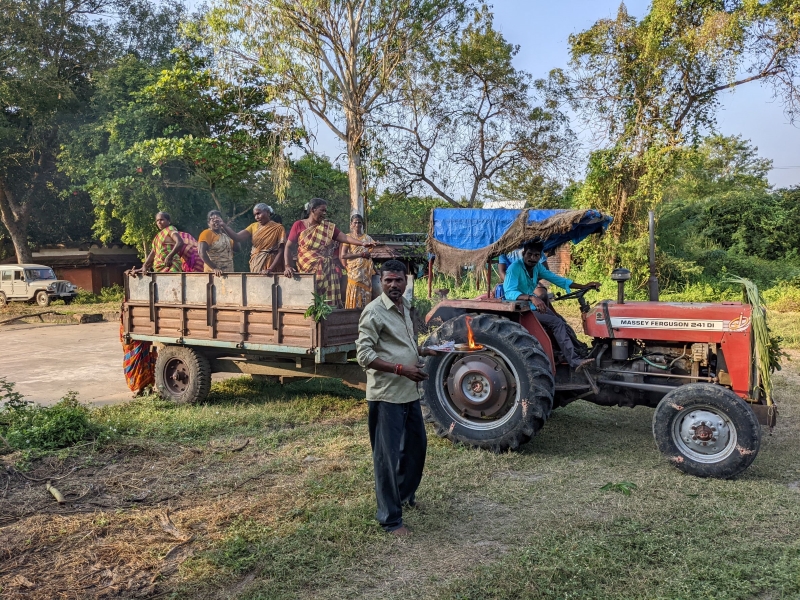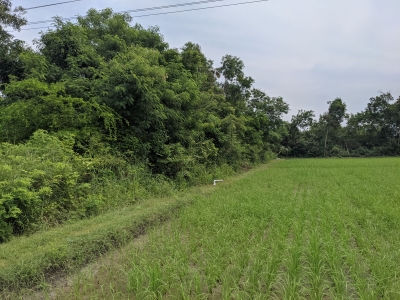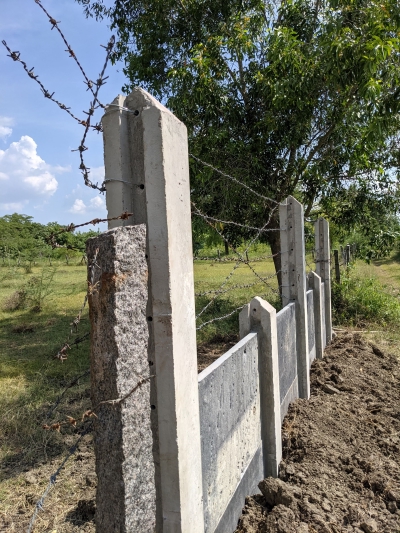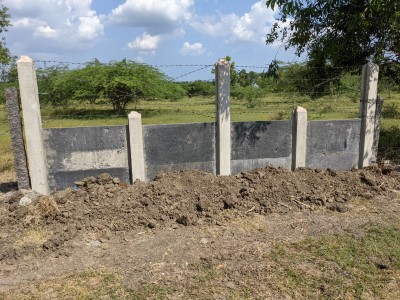As mentioned in earlier communications; Annapurna farm is invaded by wildlife like pigs, deer and peacocks and it gets more and more difficult to grow crops in the farm. As also reported in one of our communications we built a short prototype of this fence a year back to get a good idea if this design is what we need here.

Since this is going to the be by far the biggest project Annapurna farm has ever embarked upon we want to make small steps to be sure what we are going in for. The farm has a periphery of 8km! So after the first mini prototype to see the idea in real, this year we embarked on step 2 to learn how this project can best be executed and what the cost will be.
We secured funds through a generous donor to be able to build 100 m of the fence. Andre designed the pillars and casted them in our workshop. The pillars are the skeleton of the fence and need to be really good to be able to last for decades. We did realize that the work took a lot of the attention away from the farm, but the pillars which we created, although quite costly, were of a superior quality. Then we cleared the area to be fenced with a jcb and hired a contractor to install the fence. Here we did a lot of learning; Since the fence is heavy and quite different from what is normally done in Auroville, it took a lot of trials before the team had it right. The contractor used a lot of manual labor for lifting and installing. All this made the job go slow and became quite costly in the end.
Now after all this, we feel we need a third step to be able to make a proper cost estimate. We still have some materials and funds to build another section of approximately 40 m fence. Since we now know a bit better what this fence entails, we will try to improve the pillar making efficiency and will use some lifting devices to erect the fence. In short, to use minimum labor and where possible use equipment for heavy work. This work we will do after monsoon when our main crops are harvested, and soil dries up to make it possible to work properly on the site.
Once this third step is done we will get back to you with the outcomes and needs…
*note that the barbed wire still needs to be strung over the wall part like in the concept-pilot.





















